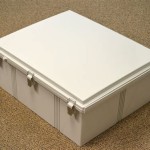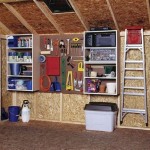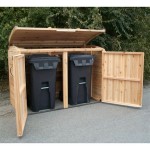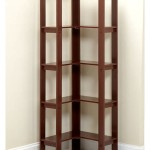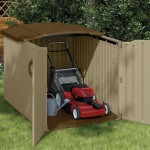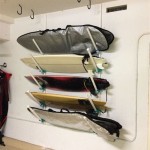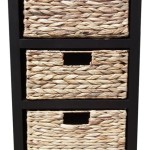```html
Kitchen Shelves Storage Ideas: Maximizing Space and Organization
Kitchen shelves serve as vital components for storage and organization within a culinary space. Effective utilization of shelf space can transform a cluttered kitchen into a functional and aesthetically pleasing environment. Optimizing kitchen shelves involves considering various factors, including shelf type, storage needs, and organizational strategies. This article delves into various kitchen shelf storage ideas, aiming to provide a comprehensive guide for maximizing space and enhancing kitchen efficiency.
Understanding Different Types of Kitchen Shelves
The selection of appropriate kitchen shelves significantly influences storage capacity and accessibility. Several shelf types cater to different needs and kitchen layouts.
Fixed Shelves: Fixed shelves are typically built into kitchen cabinets or walls. They offer stable and permanent storage solutions. The spacing between fixed shelves is predetermined during installation, limiting adjustability. However, their structural integrity makes them suitable for storing heavier items such as cookware and canned goods. When organizing fixed shelves, it's essential to prioritize items based on frequency of use. Regularly used items should be placed within easy reach, while less frequently used items can be stored on higher or lower shelves.
Adjustable Shelves: Adjustable shelves provide flexibility in storage configuration. They can be repositioned to accommodate items of varying heights. This adaptability is particularly useful for storing appliances, tall bottles, and irregularly shaped containers. Adjustable shelves are commonly found in modern kitchen cabinets, allowing homeowners to customize their storage space according to their specific needs. The ability to change shelf heights promotes efficient use of vertical space, minimizing wasted areas. When utilizing adjustable shelves, consider the overall weight distribution to ensure stability and prevent shelf sagging.
Pull-Out Shelves: Pull-out shelves, also known as sliding shelves, enhance accessibility to items stored deep within cabinets. They slide out smoothly, bringing items within easy reach. This type of shelf is particularly beneficial for individuals with limited mobility or those who struggle to reach items at the back of cabinets. Pull-out shelves are ideal for storing pots, pans, and other bulky items that can be difficult to retrieve from conventional shelves. Installation of pull-out shelves often requires professional assistance to ensure proper functionality and alignment.
Open Shelves: Open shelves offer a visually appealing storage solution, displaying items in an accessible manner. They are commonly used for storing dishes, glassware, and decorative items. Open shelves can enhance the aesthetic appeal of a kitchen, creating a sense of openness and airiness. However, open shelves require more diligent maintenance, as items are exposed to dust and grease. Regular cleaning is necessary to keep items displayed on open shelves looking their best. Furthermore, careful consideration should be given to the arrangement of items on open shelves to maintain a cohesive and organized appearance.
Corner Shelves: Corner shelves are designed to maximize storage space in kitchen corners, which are often underutilized. They come in various configurations, including lazy Susans, rotating shelves, and angled shelves. Corner shelves can significantly increase storage capacity, providing easy access to items stored in otherwise hard-to-reach areas. Lazy Susans are particularly useful for storing spices, condiments, and smaller items that can easily get lost in the back of cabinets. Rotating shelves offer a similar function, while angled shelves provide a unique aesthetic appeal. When utilizing corner shelves, it's important to consider the weight capacity and avoid overloading them with heavy items.
Strategic Organization Techniques for Kitchen Shelves
Effective organization is paramount to maximizing the functionality of kitchen shelves. Implementing strategic organization techniques can streamline kitchen workflows and improve overall efficiency.
Categorization: Categorizing items based on function or type is a fundamental organization technique. Grouping similar items together, such as spices, baking ingredients, or cooking utensils, simplifies the process of locating and retrieving items. Clear labeling of shelves or containers can further enhance categorization, making it easier to identify the contents of each storage area. Consider using color-coded labels to visually distinguish between different categories. Furthermore, storing items near their point of use can improve efficiency. For example, store cookware near the stove and utensils near the preparation area.
Vertical Space Utilization: Maximizing vertical space is crucial for optimizing shelf storage. Utilize shelf dividers, risers, and stackable containers to create multiple levels of storage within a single shelf. Shelf dividers prevent items from toppling over and create separate compartments for different categories of items. Risers elevate items, allowing you to store smaller items underneath. Stackable containers provide a space-saving solution for storing dry goods and pantry items. When utilizing vertical space, ensure that items are easily accessible and do not block access to other items.
Decluttering: Regular decluttering is essential for maintaining an organized kitchen. Periodically review the contents of your shelves and remove any items that are expired, unused, or no longer needed. Donating or discarding unwanted items frees up valuable storage space and reduces clutter. Consider establishing a regular decluttering schedule, such as once a month or once a quarter. During the decluttering process, assess the condition of your shelves and make any necessary repairs or replacements. Cleaning the shelves regularly also helps to prevent the buildup of dust and grime.
Containerization: Using containers to store items on shelves can enhance organization and protect items from damage. Clear containers allow you to easily see the contents without having to remove the container from the shelf. Airtight containers help to keep food fresh and prevent pests from entering. Different types of containers are suitable for storing different types of items. For example, glass containers are ideal for storing dry goods, while plastic containers are suitable for storing leftovers. When selecting containers, consider the size and shape of the items you will be storing, as well as the available shelf space. Labeling containers with their contents and expiration dates helps to maintain organization and prevent food waste.
Rotation of Items: Rotating items on shelves ensures that older items are used before newer items. This is particularly important for perishable goods and pantry staples. When restocking shelves, place newer items behind older items to encourage the use of older items first. This practice helps to minimize food waste and prevents items from expiring. Establishing a system for rotating items can be as simple as labeling items with their purchase dates or using a first-in, first-out (FIFO) system. Regularly check the expiration dates of items on your shelves and discard any expired items.
Creative Solutions for Kitchen Shelf Optimization
Beyond conventional storage methods, several creative solutions can enhance kitchen shelf organization and functionality.
Under-Shelf Baskets: Under-shelf baskets attach to the underside of shelves, providing additional storage space for lightweight items such as produce, spices, or small kitchen tools. These baskets maximize unused vertical space and keep items within easy reach. Under-shelf baskets are particularly useful for storing items that are frequently used but do not require a large amount of space. They can be easily installed and removed, making them a versatile storage solution. When selecting under-shelf baskets, consider the weight capacity of the shelf and the size of the items you will be storing.
Door-Mounted Racks: Door-mounted racks attach to the inside of cabinet doors, providing storage for spices, condiments, cleaning supplies, or other small items. These racks utilize otherwise wasted space and keep items organized and accessible. Door-mounted racks are particularly useful for storing items that are frequently used but do not require a large amount of space. They can be easily installed and removed, making them a versatile storage solution. When selecting door-mounted racks, consider the thickness of the cabinet door and the weight capacity of the rack.
Hanging Organizers: Hanging organizers can be used to store items on shelves that are too tall for conventional storage methods. These organizers typically consist of fabric or mesh pockets that hang from the shelf, providing storage for items such as produce, towels, or cleaning supplies. Hanging organizers are particularly useful for storing items that are lightweight and do not require a rigid structure. They can be easily moved and repositioned, making them a versatile storage solution. When selecting hanging organizers, consider the weight capacity of the shelf and the size of the items you will be storing.
Repurposed Items: Repurposing items for storage can be a cost-effective and creative way to organize kitchen shelves. Old jars, cans, and boxes can be transformed into storage containers for dry goods, spices, or small kitchen tools. Consider painting or decorating repurposed items to match your kitchen décor. Repurposing items not only saves money but also reduces waste and promotes sustainability. When repurposing items for food storage, ensure that they are clean and food-safe.
Lighting Solutions: Adding lighting to kitchen shelves can enhance visibility and make it easier to locate items. Under-cabinet lighting, LED strip lights, or battery-operated puck lights can illuminate shelves and create a more inviting storage space. Lighting is particularly useful for shelves that are located in dark corners or under cabinets. Consider installing motion-sensor lighting to automatically illuminate shelves when they are accessed. Proper lighting can improve the functionality and aesthetic appeal of kitchen shelves.
By implementing these storage ideas, individuals can ensure their kitchen shelves are organized and functional, promoting a more efficient and enjoyable cooking experience.
```
Check Out These Simple Ideas For Kitchen Storage Organisation

20 Walk In Pantry Ideas For Stylish Kitchen Storage

20 Kitchen Storage Ideas Extra Space

Kitchen Storage The Container
:strip_icc()/NEATLITTLENEST1-f37d50a35cbe4561a7e9be0a0221506f.jpg?strip=all)
20 Best Small Pantry Organization Ideas You Have To Try

Expert Kitchen Design

Kitchen Storage Design Ideas This Old House

Kitchen Organization Ideas For Small Kitchens

Kitchen Storage And Organizing Ideas Food Network

10 Unique And Clever Kitchen Storage Solutions
Related Posts


